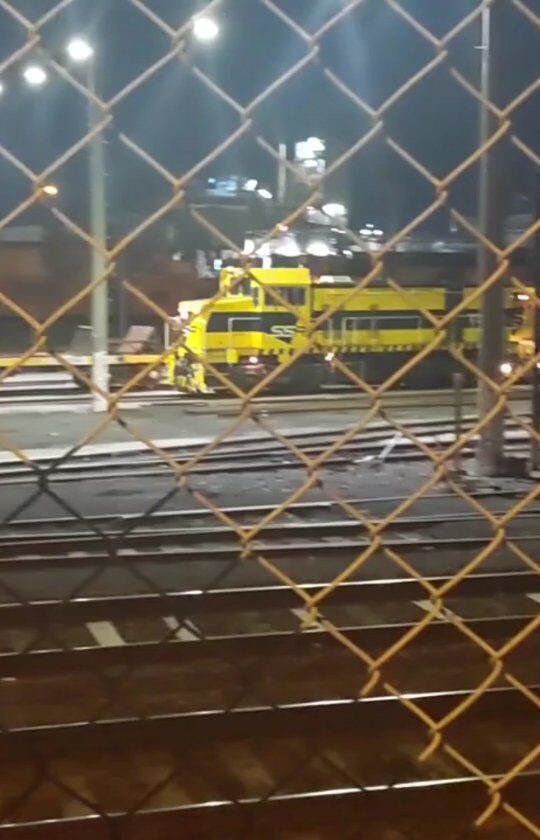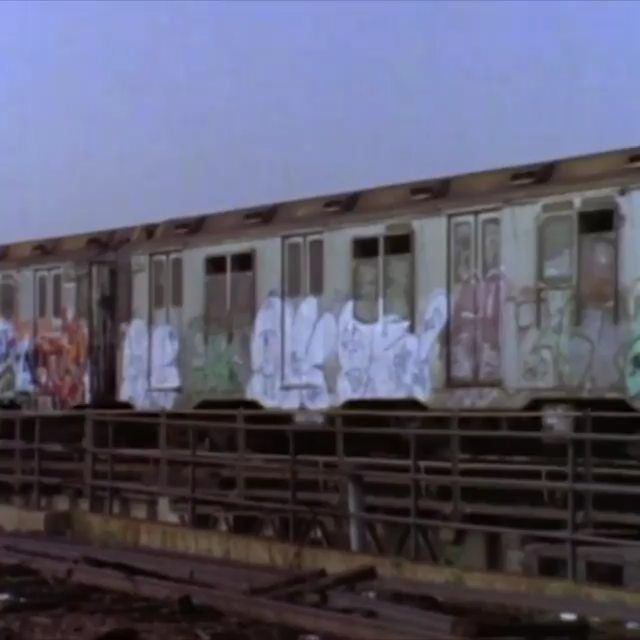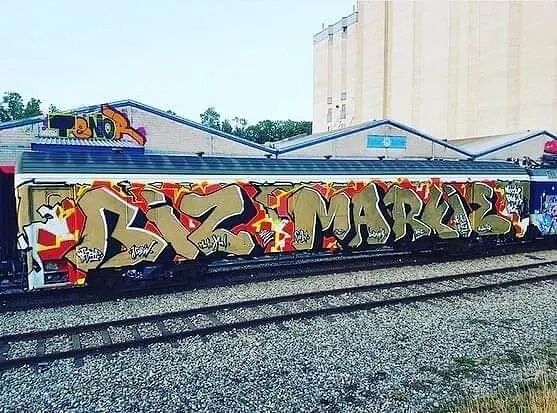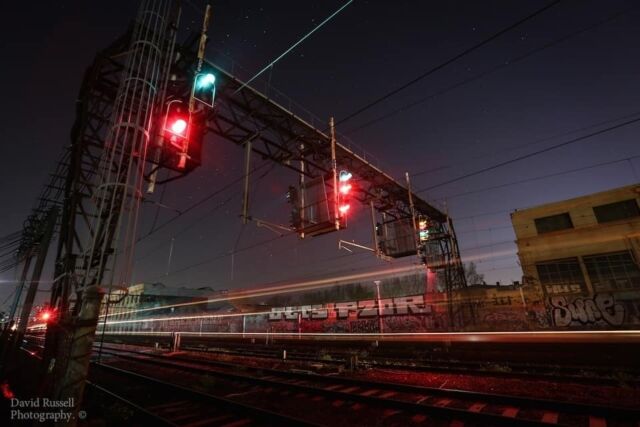From his hometown of Brisbane, to Melbourne, New York and seemingly all across the country, Guido Van Helten has been working his own brand of artistic magic across city walls for many years. From commissions of public art, to his own personal work, it is only now that he is beginning to enter the gallery realm – with a seriously mature arsenal of talent already in hand.
Having had the chance to see one of Van Heltens works evolve on the streets of Richmond late last year, his remarkable roller and aerosol techniques left us thoroughly enthralled. Watching him paint upon a wall is like watching the meticulous unfolding of a piece of origami, each completed layer locking away a new piece in the overall puzzle.
Large, bold tones and contrasting blocks of colour evolve into detailed and meticulous renderings, and you are left with the feelings that there is a palpable, intrinsic evolution within the process behind his work. These well honed elements, placed amongst gritty, urban spaces, combined with a deft aptitude for the oft intimidating art tweaking, results in a final piece with a detailed palette of swatched tones and concise, alluring features.
Van Heltens steady output of work in the public arena has, without a doubt, seen him raise the bar for street based portraiture. With his upcoming show with Scott Marsh at Sydneys Lo-Fi Gallery this week, we were more than happy when he agreed to have a chat to us we were really happy to have the chance to throw a few questions his way. This is, believe it or not, his first ever interview, yet we know with absolute certainty that there will be many, many more to come …
You studied art and have done a bit of formal training – but how did you first start out drawing and what lead you to go into art school? Give us a bit of background to your practices…
Creativity in various forms has always been a part of my life, finding various outlets throughout my early days… and then came graffiti. Graffiti inspired me throughout my childhood, and when I hit my rebellious teenage years it offered to me the perfect outlet from all the typical aspects of being a teenager, an escape into a different world and after neglecting everything else in high school it only seemed natural to pursue what I loved.
Graffiti can be a blessing and a curse, it definitely distracted me from taking full advantage of Art College, it took the usual negative side effects of graffiti to push me into what I’m doing now…
How about your daily grind? What activities help you to fund the life as an artist? Are you full time or part time? Work, or struggling through creativity? How do you find this aspect of the artistic life and what are the constant constraints and pitfalls within it?
I have been particularly successful in receiving a number of ‘Public art’ or ‘community mural’ commissions since I took on art full time. This is all well and good in terms of cash – but I have learnt that in this field your art can get really corrupted and twisted around as you find that the money starts to take over your passion.
Recently I’ve found that I would rather get paid nothing to express myself the way I like, than to change it to suit the wider audience. These ideologies stem from my graffiti years – the difference is permission vs. commission, with the latter usually requiring some sort of alteration of your work. I’ve learnt that this is not what art is about – to me, this is the big difference between mural art and street art. Painting murals within a design constraint at first seems better than a nine to five – but I have come to the realisation that working a bum job all day, for mediocre money, while I paint for fun, is far better in the long run.
I use art to express myself and escape from work – it is sacred.
When did you really start throwing yourself into painting on walls, and what was it that made you take your work into such a publicly viewed arena?
I tend to apply everything I’ve learnt from graffiti to my artistic strategies. Scale, speed, determination and developing your own unique style. Walls are the obvious choice, I love getting a good spot, in as many places I can.
Cities, walls, roller doors, countries – it all adds to my drive, pretty much I want to paint in as many varied places as possible … the larger the better!
Can you tell us a bit about your wall painting techniques? We’ve been lucky enough to see you paint before, and were pretty damn impressed by your roller skills … that, and your slightly vectored, yet highly stylised impressionistic portraits – how do you go about applying your layers and work to the bigger format?
My technique is pretty simple, I’ve never been a natural at drawing or at getting things perfect first go its taken a long time to get where I am. I always work from a reference image and I pretty much work on a correction strategy, ill roll up a wall with the basic shape, then I just go for it, each layer or shape I paint may not be right at first, I just keep on correcting until its just right, I just go for it layering fading edges together with fatcaps, rollers etc, I get obsessive about a wall until its finished… I can’t walk away until I’m happy with it and I get embarrassed if it looks like shit.
I’ve never found projectors to work for me, it just seems confusing – they don’t allow the image to evolve naturally on the wall.
In terms of the iconography of your work? Women feature heavily, as do other portraits, and there always seems to be a sense of movement within these. We think one of the most unique aspects is that none of them feel staged, and that all of your pieces have that “candid” aspect to them – is this intentional, or is it a by-product of your own inner whimsy?
I suppose the subjects I paint at this stage are a starting point in what I’m trying to create, an image executed with my own personal Style, I am aiming for beauty and simplified form… by working with simple colours and layers I’m trying to pinpoint this and narrow this down. The female form happens to be the natural choice for this at this stage, I would love to be able to paint a portrait using minimal simple strokes of the roller, fatcap or brush in a short space of time and still have it still represent the subject fairly accurately. This is the grand goal I want to refine a mixture of immediacy and precision and I suppose this strategy tends to create the sense of movement.
I don’t like typical portraits with the usual compositions, I try to involve the image of a camera a lot, as this tool is, I think an important aspect of street art, both in its documentation and its development. I work from photos of subjects and at the end I take a photo, its part of the game – I like the iconography and symbolism of the camera …
A lot of the actual gallery styled paintings we’ve seen of yours recently have been painted on found materials such as corrugated steel – why have you tended towards this style of presentation over a traditional canvases approach? Is it an extension of your street work, or is it just a matter of whatever feels great at the time?
Canvases don’t inspire me… I have always had trouble transferring my art and street work onto a canvas, as soon as you sit me in front of one I get bored… although I am getting better at this. I’m inspired by the street, the environment where I am painting gives me the motivation I need, the environment I’m in or the spots what I call “flavour” the public eye and the pressure to get it done is a big part of my art.
Once I learnt this about myself, I felt that found materials could somehow replicate it. Corrugated iron and any difficult surface presents a challenge – I like challenges. I love it when you see an image painted over a varied surface as if it wasn’t even there … and painting on steel or another grimy surfaces gives me the sense of urgency that somehow drives me to finish a painting.
You’ve also done a fair amount of commission work in the past few years, what have been some of the standout moments and what have been some of the pieces you think satisfied you the most, both personally and commercially? What are your thoughts on working within a defined brief for these?
Working with organisations such as Queensland Rail and Brisbane city council has, at the same time, been both ironic and stimulating. It has forced me into different mediums (no spray-paint allowed on BCC or QR property as this could encourage disillusioned youths to pick up the dreaded spray-can) therefore I have become adept with the extendable roller pole (hahaha) as it is both challenging and versatile – it has made me more professional, and given me a structured way of working. I enjoy the fact that these large commissioned murals often have limitless resources, therefore riding round on a rough terrain scissor lift loaded with paint has definitely been a highlight.
Design briefs are very frustrating as most people who write the briefs don’t know a thing about art, what will look good etc. I love a bit of creative freedom, and I think allowing this allows not only art to flourish, but the artists freedom of ideas and creativity – its tough painting street art in the Queensland police state, commissioned walls are common, but rarely are the artists given artistic license.
Can you enlighten us about what the Urban Smart “Traffic Signal Box Art” program was all about? We’re just curious we’ve heard about it before, and it sounds pretty interesting – are you still working on this? What other cool public projects have you been involved with?
This project was kind of a starting point for me when I began my I suppose you could say ‘Legal’ career. It’s basically an organisation that allows you to submit designs to paint those traffic boxes you see around cities. Its not paid work, nor are the boxes that interesting to paint, ut it’s a cool project, a lot of Brisbane artists have started here including Lister, Simon Degroot etc. It could be looked at as an analogy of Brisbane’s attempt at allowing street art to flourish, as it is supported by the BCC, but it still is very regimented and strict. You know, “no spray-paint allowed!” – although I have broken this rule pretty much every time, haha!
I am not doing this so much anymore … as I’ve said I’ve changed my strategy. I like my art to be interesting, reaching and growing over walls, not confined to a box…
Despite all the work you have done over the years, you have exhibited in, relatively, only a few exhibitions – what about solo shows? Is this one coming up in Sydney the first solo-ish show you’ve done? Tell us a bit more about the upcoming show.
I am new to the gallery game, so the Sydney show will be an interesting collaboration between me and the Sydney connection – Scott Marsh, we are both hitting it hard with painted walls and video projection as a way of exhibiting street work (where the magic happens) and our gallery works together as one big event at LOFI collective – if you’re in Sydney everyone should definitely come along …
After the show in Sydney, what are your plans? Do you have any travels thought out, any ideas of places where you would love to paint? If you could paint in any other cities besides those here in Australia, where would they be, and why?
Pretty much I live to travel, and I travel to paint – these things to me go hand in hand – I pretty much want to paint everywhere in the world, this is a habit that spawns from graffiti, its all about new cities, new flavour’s and architecture, I’ve painted in some interesting places so far, Vietnam, Japan, USA, Europe etc.
The Asian region interests me a lot, along with all countries and cultures, the walls there are relatively untouched by street art in comparison, and I have found that people respond to it naturally without the negative stigma it can receive in western countries, people thank you for painting their walls, enjoy your work… and it rolls on from there … pretty much pick an obscure place in the world and I want to go there – India, Borneo, Nepal, you name it – one day I will make it.
Other than all that, I have another solo show coming up on September 14 at Jugglers art space in Brisbane. I aim to use a video projection strategy to display further street work in a video format of the work that I have been doing both internationally and locally. I’m planning to squeeze in an overseas trip between now and then, additionally I have been constructing some interesting surfaces to paint on …
… stay tuned!
Image list
Image 1: Collingwood silos, Melbourne VIC
Image 2: Wooloongabba, Brisbane QLD
Image 3: Kangaroo Point, Brisbane QLD
Image 4: Eggins Lane, Lismore, NSW
Image 5: Capalaba, Brisbane Bayside, QLD
Image 6: Civic Centre, Canberra, ACT
Image 7: Contraband Exhibition, QLD
Image 8: Ballina Street Bridge, Lismore, NSW
Image 9: Untitled, Enamel & Aerosol on canvas 2012
Image 10: Brooklyn, New York, USA
Image 11: Enamel & Aerosol, 2012
Check out more of Guidos work over at his blog and get details on his and Scott Marshs show here.


























Leave a Comment
Your email address will not be published. Required fields are marked with *